Countdown: Ranking the Nine Films in the Star Wars Skywalker Saga
9. Episode II: Attack of the Clones
 Most Star Wars fans rank Episode I or Episode II as the worst of the nine, and it's true these are the only two in the cycle I would diplomatically call "not good". Still, while I agree that the first two prequel films fail in many ways in terms of successful entertainments, I do admire them for their originality of artistic vision & layered, poetic connections to the original trilogy. George Lucas was thinking deeply about these choices, but he often seems to focus more on the visuals (which are fantastic achievements) and leaves character development and dialogue floundering.
Most Star Wars fans rank Episode I or Episode II as the worst of the nine, and it's true these are the only two in the cycle I would diplomatically call "not good". Still, while I agree that the first two prequel films fail in many ways in terms of successful entertainments, I do admire them for their originality of artistic vision & layered, poetic connections to the original trilogy. George Lucas was thinking deeply about these choices, but he often seems to focus more on the visuals (which are fantastic achievements) and leaves character development and dialogue floundering.What makes Clones the worst, in my view, is the combination of the horribly written romance between Anakin and Padme (the "I don't like sand" line was so instantly infamous it might be the most famous line from the prequels) with the awkwardly executed final lightsaber battles with Count Dooku, which completely lack the passion & character stakes of the end of Episode III and the graceful choreography at the end of Episode I.
There is pleasure to be found in a close look. Obi-Wan's galactic-noir detective subplot is well done, from an American Graffiti-callback "'50s" diner to the stern Librarian at the Jedi archives to the creepy-polite Kaminoans and their army of Clones. The scene of Obi-Wan being restrained and interrogated by a truth-telling Count Dooku is morally complex. Rewatching also rewards fans with many visual clues (especially with color and details) that show it to be an Empire Strikes Back reverse echo in some key ways, as Empire began with our heroes facing monstrous creatures and fighting epic battle on the icy blue of Hoth and ends with a bounty hunter's trap in the crimson-tinged heights of Cloud City. Clones begins with a trap set for a bounty hunter in the dark blue skies of Coruscant, and ends with an epic battle in the rocky red planet of Geonosis as our heroes fight monstrous creatures. In both films, C3PO is dismembered, a Skywalker loses a limb, and two characters fall in love. If you look even closer, you can see Lucas's concern with repeating and inverting poetic details is almost an artistic obsession. But Lucas seems to miss the forest for the trees, as whereas Irvin Kershner elicited some of the best performances of the series in his direction of Empire, in Clones Lucas leaves his actors struggling to sell his clunky, often atrocious dialogue as he concerns himself with painting his digital canvas. At the end of Empire, we are awed and devastated. At the end of the overlong Clones, we are relieved.
8. Episode I: The Phantom Menace
 There are many problems with The Phantom Menace, one of the most infamous disappointments in movie hype history. With it, George Lucas attempted something different from his original trilogy, inspired seemingly less by Flash Gordan and more by period costume and political dramas. He spent several years writing and planning Episode I, and the work is evident in the extraordinary sets, costumes (perhaps the best in the saga), thrilling pod race sequence, and visionary production design in Coruscant and Naboo.
There are many problems with The Phantom Menace, one of the most infamous disappointments in movie hype history. With it, George Lucas attempted something different from his original trilogy, inspired seemingly less by Flash Gordan and more by period costume and political dramas. He spent several years writing and planning Episode I, and the work is evident in the extraordinary sets, costumes (perhaps the best in the saga), thrilling pod race sequence, and visionary production design in Coruscant and Naboo.It is not so evident in the characters.
The movie combines dry politics with an aggressively cartoonish digital comic relief character (the notorious Jar Jar Binks) which, perhaps, was meant to find a way to appeal to both adults and children, but ultimately serves to alienate both. Lucas has talked about being inspired by Buster Keaton in his portrayal of the history-making digital character of Jar Jar (and even has Jar Jar named a "General" in tribute to his inspiration), but when the resulting character steals every scene he's in out of sheer obnoxiousness & comparative woodenness of the other characters, the film has a problem. Still, Jar Jar is not as bad as his reputation, and he does possess, in the right light or state of inebriation, an odd and aggressive charm, if one surrenders to the mess completely.
There are lovely things about Menace that put it above Clones. The pod race sequence is truly one of the best parts of the prequels. A young Natalie Portman as Queen Amidala presiding over Naboo in her Gaga-prophetic garments and deep Queen voice, and the game of doubles played with decoys, is fascinating and campy. The final lightsaber battle with the otherwise rather banal villain Darth Maul is beautifully choreographed, and with the death of Liam Neeson's contemplative Qui-Gon Jinn, Ewan McGregor's Obi-Wan has something real to fight about. Yoda has a classic line about the progression to the dark side, and John Williams turns in a gorgeous, haunting, poetically layered score.
But all this is dragged down by a slow-moving convoluted plot, a sometimes cringe-inducing performance from Jake Lloyd as young Anakin (not ultimately his fault), and obnoxiously bad attempts at humor, mostly from Jar Jar. There is no spark with the characters, no fire. Of course, that fire would arrive eventually.
7. Episode IX: Rise of Skywalker
 Episode IX, the conclusion to the Saga, just "surpassed" Episode I as the worst-reviewed of the series (and they are the only two considered "rotten" by Rotten Tomatoes). For several reasons I was tempted to rank it even lower - especially since as a Disney-fied, corporatized, overly-shallow bombastic nostalgia-powered product, it's the opposite of the individual artistic vision pursued by Lucas in both Episode IV and Episode I. And yet, it cannot be denied that this film, unlike the first two Episodes, is consistently entertaining and slickly made. It's also a better-than-expected tribute to Carrie Fisher and Leia Organa, given her untimely death before filming began (and which made initial director Colin Trevorrow's recently leaked unused script - to me something of a could-be masterpiece - unfilmable.)
Episode IX, the conclusion to the Saga, just "surpassed" Episode I as the worst-reviewed of the series (and they are the only two considered "rotten" by Rotten Tomatoes). For several reasons I was tempted to rank it even lower - especially since as a Disney-fied, corporatized, overly-shallow bombastic nostalgia-powered product, it's the opposite of the individual artistic vision pursued by Lucas in both Episode IV and Episode I. And yet, it cannot be denied that this film, unlike the first two Episodes, is consistently entertaining and slickly made. It's also a better-than-expected tribute to Carrie Fisher and Leia Organa, given her untimely death before filming began (and which made initial director Colin Trevorrow's recently leaked unused script - to me something of a could-be masterpiece - unfilmable.)But yikes, bringing back the dead Emperor, retconning some of the stunning & profound character choices made in Episode XIII, and awkwardly manipulating the audience with character "deaths" that aren't followed through on and fan service of the worst, most cringe-worthy kind - these are definite choices, and they are not good. As much as Ian McDiarmid is always a welcome queer energy as Palpatine, he simply wasn't necessary, and my opinion on J.J. Abram's film (which had my benefit of the doubt given the tribute to Leia) has soured considerably since the leaking of the fired Trevorrow's gorgeous, thoughtful script (titled "Duel of the Fates"). While we only have a detailed breakdown, I do think that someday we will have the script itself. And that script, perhaps as a non-canonical Star Wars legend, will always feel the more worthy conclusion compared to what we ended up with, at least to me.
 |
| Oscar Isaac deserved more opportunities for homoerotic tension |
 As bad as J.J. Abrams is at endings (he literally admitted he's bad at endings), he does have a talent at beginnings and setting up mysteries to hook an audience (this is the man who co-created...and ended... "Lost"). And that talent is evident in Episode VII, a high-pressure Disney Star Wars installment that could have been an epic failure, but was instead a well-received launch to a new trilogy which is weaker only in retrospect, given the inadequacy of the conclusion. In this film, the sometimes remake-like similarities to A New Hope (and a lackluster villain in "Snoke") could be forgiven given the quality screenplay (co-written by Star Wars veteran Lawrence Kasdan) and introduction of interesting new characters and questions. There are compelling new ideas, such as the Stormtrooper with a conscience and commitment issues (Finn), and classic remakes of old ones, like casting the hottest man of the decade as an arrogant pilot (Oscar Isaac as Poe - basically a new Harrison Ford playing a more Leia-like character).
As bad as J.J. Abrams is at endings (he literally admitted he's bad at endings), he does have a talent at beginnings and setting up mysteries to hook an audience (this is the man who co-created...and ended... "Lost"). And that talent is evident in Episode VII, a high-pressure Disney Star Wars installment that could have been an epic failure, but was instead a well-received launch to a new trilogy which is weaker only in retrospect, given the inadequacy of the conclusion. In this film, the sometimes remake-like similarities to A New Hope (and a lackluster villain in "Snoke") could be forgiven given the quality screenplay (co-written by Star Wars veteran Lawrence Kasdan) and introduction of interesting new characters and questions. There are compelling new ideas, such as the Stormtrooper with a conscience and commitment issues (Finn), and classic remakes of old ones, like casting the hottest man of the decade as an arrogant pilot (Oscar Isaac as Poe - basically a new Harrison Ford playing a more Leia-like character).And then there's the promising Rey, the scavenger on a desert planet with mysterious origins & force powers, who is primed to be the "Luke"-like hero, and Kylo-Ren as the wannabe Darth Vader who turns out to be the wayward son of Leia and Han Solo. Well cast both, these are intriguing beginnings, and combined with Harrison Ford's excellent return performance as an older, wizened, doomed Han Solo and Lupita Nyong'o as a no-nonsense, Yoda-esque Maz Kanata, the film is a success. What it lacks in originality it makes up for in execution. It is in retrospect, after J.J.'s mystery boxes are opened in Episode IX to mixed/disappointing results, that this too-eager-to-please movie loses some of my initial respect.
5. Episode VI: Return of the Jedi
Many fans might balk at ranking a movie from the original trilogy (by far the most successful trilogy of the three) so low, but this ranking is less a critique of Jedi as it is a reflection of the greatness or risky originality of the films ranked above it. That said, while the beginning sequence in Jabba's palace is Star Wars at its ridiculous, creative best, the second half with the Ewoks, while far from bad, misses a few opportunities. Perhaps worst, there is little for Han Solo to do given the rewrite from Harrison Ford's last-minute decision to do the film, as well as George Lucas balking at the inspired creative advice from others to have his character die. That would have elevated the Leia/Han romance to tragic grandeur, and the film trilogy as a whole to an even higher level.
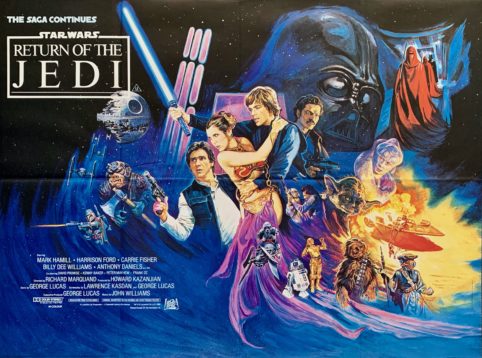
Despite that failure of nerve, there is a whimsy-woodsy-charm to the Ewok scenes, and the speeder chase through the redwood trees is exciting, if not quite as thrilling as it's poetic echo in the pod race in Episode I. The final showdown with Luke, Vader, and the Emperor is a worthy and surprising conclusion to their stories (and Ian McDiarmid's performance is delicious). A nearly naked objectified slave-Leia strangling Jabba the Hutt with her chains is one of the best moments of the saga, and an excellent metaphor for how Carrie Fisher dealt with the sexist Hollywood nightmare she worked within: a big f*ck you.
4. Episode III: Revenge of the Sith
I almost had a failure of nerve and ranked Sith behind Jedi as most others would - but if I'm being honest with myself, if it's between those two films, I'd choose to rewatch Sith. This is the most operatic of space operas, campy and tragic, and strung-out with homoerotic tension. Nevermind the flaccid romance between Anakin and Padme, on that we have given up even as Natalie Portman gamely goes through the motions. And nevermind the still often painfully stilted dialogue (Ewan McGregor attempting to sell "I have seen a security hologram of him... killing younglings" is my favorite). No, focus on the creepy, seductive dance Palpatine has with the brooding, frustrated Anakin, edging him closer and closer to the dark, teasing him in a grandly creepy Lovecraftian Opera scene with the possibility of cheating death, accurately critiquing the Jedi as narrow, dogmatic, and self-righteous. If Anakin's transformation into Vader is only half-successful, Palpatine becoming the Emperor is the best arc in the trilogy. In the arrest showdown with Mace Windu, when Palpatine finally becomes the disfigured grotesque Emperor we all know and love, Ian Mcdiarmid cranks it to 13 and almost saves the entire Prequel series out of sheer operatic glee.
 There are other touches of greatness. When at last, Anakin and Padme stop talking and stare out across Coruscant in one another's vague direction, and with moody music feel the darkness consume them, we glimpse the classic silent film this trilogy might have been. When Order 66 begins the slaughter of the proud Jedi Knights and we watch the Clones become Stormtroopers before our eyes, it is thrilling and horrifying. When Anakin crosses the point of no return upon entering the Jedi room of the younglings, and we see him extend his lightsaber as the young-Anakin-resembling child before him shudders in a flash of fear, we feel the horror & profundity of it, briefly, in our guts. For the Prequel trilogy, human moments like this are a stunning achievement.
There are other touches of greatness. When at last, Anakin and Padme stop talking and stare out across Coruscant in one another's vague direction, and with moody music feel the darkness consume them, we glimpse the classic silent film this trilogy might have been. When Order 66 begins the slaughter of the proud Jedi Knights and we watch the Clones become Stormtroopers before our eyes, it is thrilling and horrifying. When Anakin crosses the point of no return upon entering the Jedi room of the younglings, and we see him extend his lightsaber as the young-Anakin-resembling child before him shudders in a flash of fear, we feel the horror & profundity of it, briefly, in our guts. For the Prequel trilogy, human moments like this are a stunning achievement.There are also Yoda moments I treasure, like his condescending "For the Clones to discover the recalibration, a long time it will take." And who could forget "If into the security recordings you go, only pain will you find." These lines are so odd, so wrong - and yet so perfect. And when tiny Yoda confronts the Emperor in his chamber, his dismissive force wave collapsing the towering Red Guards is absolutely fabulous. At the end, when Padme gives birth to Luke and Leia, the midwife droid cooing "ooobah, ooohbah" is a lovely touch, and one I now use to calm others having a bad day at work. Perhaps this sounds like reaching - what I mean is that Lucas might have major weaknesses as a director, but his commitment to detail and creative originality is not one of them, and for me those details accumulate into something beautiful that overcomes the character-centric flaws.
Later, when Obi-Wan duels with Anakin on the hell-lava planet Mustafar, all passionate male love and betrayal, they sweat all the toxic chemistry that was missing between Anakin and Padme. It is, in a word, hot. It's also a stunning work of art, a visual cornucopia. The entire film is full of gorgeous flows, from the opening long shot of Anakin and Obi-Wan flying in a battle raging over Coruscant, to the mesmerizing sky traffic visible out the tower windows of that urban planet, to the lava hell-rivers of Mustafar, to the unleashed Emperor gleefully force-tossing Senate furniture at a flippy, nimble Yoda as the Republic crumbles into dictatorship, to Padme's funeral procession flowing through Naboo, where once streamed a celebratory parade. This film is epic and tragic, but also melodramatic, bizarre, fully committed, and never boring. It flits between gorgeous action sequences and stilted dialogue in ornate rooms, framed like still life masterpieces, structured like a 50s ancient Roman religious epic. Thankfully, John Williams's sweeping, martial score helps to thwack the still numerous flaws into Star Wars submission, like whack-a-mole. It's a movie half shit and half gold, but the gold is worth it.
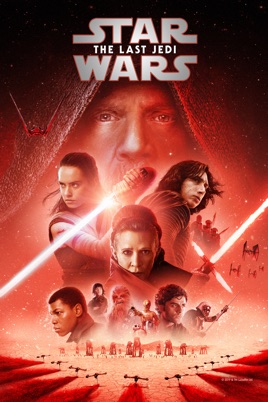 3. Episode VIII: The Last Jedi
3. Episode VIII: The Last JediI'm just going to say it, because I'm tired of being polite about it: The Last Jedi is a beautiful, haunting story about failure and growth and mythology and mature heroism, and the people who hate it probably had a pretty shallow appreciation of Star Wars to begin with.
Sure, there are flaws. It's a bit too long. Some of the humor is a bit off or cringey. I enjoy Canto Bight and what it's trying to do, but I get it if you don't. You certainly don't have to *love* the film like I do, risks and reaches and fails and all. But if your beef with the movie is that it tells an unexpected story of a depressed & isolated & guilt-burdened Luke Skywalker painstakingly finding his way back to again playing the heroic savior role for those he loves, and finally appreciating his life's journey and meaning and finding peace with the force - my God, I don't even want to know you. I was sorta cool on Luke Skywalker until The Last Jedi, when I finally connected with and loved him for the first time. It is one of the greatest heroic sendoffs I have *ever seen* for a protagonist on screen. If that made you angry, really, what did you think heroism even was? Swinging a laser sword around better than the bad guys?
There are other critiques I can appreciate as a matter of taste. Laura Dern's Vice Admiral Holdo is definitely for me, but she isn't for everyone, and I get being annoyed by her character. But this film also contains my second favorite Leia moment in the entire saga, when she saves herself from death in the vacuum of space by using near-death force powers to fly back to the ship. That shot is so odd and spiritual and stunning it's like Star Wars Byzantine religious art. If you laughed uncomfortably and thought it was stupid, that's on you, really. I'm just grateful I don't live in your head.
The training scenes between Luke and Rey are my favorite since Yoda training Luke on Dagobah (and I loved the scenes of Palpatine mentoring Anakin). For me, Star Wars is about spiritual training, and the force isn't complete fantasy, it's also a metaphor for something mysterious and connective and perhaps even magical that is also potentially quite real, if not so explicitly so in our sick sad surface world. There is depth to this movie, an unsettled and complicated morality with the erotic & electric force connection between Rey and Kylo. This Star Wars, as the kids now say, fucks. We are made uncomfortable also by the failure of the characters, by Poe being called out for his arrogant and misguided view of heroism, by Rose and Finn trying, and failing, in their feisty indulgent sidequest. We are discombobulated, even frustrated and angered, maybe dissatisfied to learn that Rey is not some famous name, but a "nobody." But it is all in service of a painful growth, for us as fans and for the saga as a whole.
"The greatest teacher, failure is," Yoda tells Luke, and us, in a film where Luke truly reckons with the arrogance and failure of the Jedi Order, and his resulting disillusionment. But then he decides to play the hero anyway ("the galaxy may need a legend"), arriving to face down his nephew and the First Order, reuniting with Leia (and in my favorite touch, able to kiss Leia on the forehead despite being a Force Projection), and telling us no one is ever really gone. He makes his stand, using all his life's energy, and gives the remaining resistance time to escape. When we see him become one with the force, he's truly earned it.
When the film ends, seemingly hopeless, the resistance reduced to dozens, we see the story of Luke standing up to the entire First Order spread as legend, a spark of hope in the next generation. That is Star Wars. That was the magical feeling Star Wars stirred in me after The Empire Strikes Back but never quite seemed to reach again - not, that is, until Rian Johnson's The Last Jedi.
2. Episode V: The Empire Strikes Back
 Many would rank this film as their number one, and if one leaves originality out of it, I would say Empire is probably a better film than A New Hope. But I don't leave originality aside, and that ramshackle creative charm of the first film will always be the best for me. But what Empire accomplishes -- as a sequel that deepens, darkens, and expands the universe of the original in exciting and disturbing ways -- is perhaps harder to pull off, and rarer, especially in Hollywood. It succeeded most of all, I think, because it combined a group of talented screenwriters with an act of humility from George Lucas, who made a rare inspired decision to cede control to a genuine creative talent, Irvin Kershner, a man excellent with actors and who elicits some of the best performances of the saga.
Many would rank this film as their number one, and if one leaves originality out of it, I would say Empire is probably a better film than A New Hope. But I don't leave originality aside, and that ramshackle creative charm of the first film will always be the best for me. But what Empire accomplishes -- as a sequel that deepens, darkens, and expands the universe of the original in exciting and disturbing ways -- is perhaps harder to pull off, and rarer, especially in Hollywood. It succeeded most of all, I think, because it combined a group of talented screenwriters with an act of humility from George Lucas, who made a rare inspired decision to cede control to a genuine creative talent, Irvin Kershner, a man excellent with actors and who elicits some of the best performances of the saga.It might be difficult to recollect up the feeling of strangeness and shock Empire provokes on a first watch -- even if one is primed to expect the strange from watching A New Hope -- but this movie is risky and weird. We start on Hoth, with Han Solo saving a frozen Luke by stuffing him into the guts of a domesticated Tauntaun, and we end with the greatest shock of the saga, the confession from Dark Vader that the symbol of pure evil is, in fact, our hero's father.
Between, we are treated to a romance, between Leia and Han Solo, that actually *works* as well as one of the greatest fictional creations of the century, the puppeteered 900-year-old petite Jedi master Yoda, voiced by the great Frank Oz. The shaman-like force trainings between Yoda and Luke on Dagobah are, to me, the heart of the saga. They are what power everything else and infuse those countless lightsaber battles and political machinations with poetic and spiritual meaning. In the Jedi and the Force, Lucas tried to combine all religions into a sort of ur-religion, in order to say something about spirituality and faith itself. To many, Star Wars is an entertaining fantasy - but to some, that fantasy touches upon something both mythological and true. And that Michelangelo finger-touch with the unknowable mystery is at its most tantalizingly close with the Yoda scenes of Empire Strikes Back.
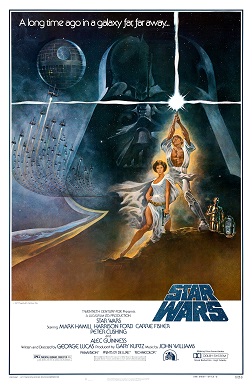 As great as Empire is - and it is one of the best sequels ever made - there is nothing in the saga that could match the sheer unlikely originality, even the genius, of 1977's multiple-Oscar-winning Star Wars. The creation story is just as good as the one on-screen, with everyone underestimating the young, awkward George Lucas and his ridiculous-seeming vision of a nutball "space opera" inspired by his childhood love of Flash Gordan serials and more recent obsession with Joseph Campbell's writings on mythology. Lucas had to fight for every shot, and when it was done, the initial screening to his filmmaker friends was a disaster. It was only with the brilliant (and Oscar-winning) editing intervention, mostly from his then-wife Marcia Lucas, combined with an Oscar-winning score from John Williams, that his vision became something surprising, new, and even profound. Star Wars did exactly as he hoped it would - it became an American myth, a new face for an ageless heroic story. It was a sci-fi infused fantasy, taking place a long time ago in a galaxy far, far away, that raised a generation of dreamers and helped change the film industry forever - for better or for worse.
As great as Empire is - and it is one of the best sequels ever made - there is nothing in the saga that could match the sheer unlikely originality, even the genius, of 1977's multiple-Oscar-winning Star Wars. The creation story is just as good as the one on-screen, with everyone underestimating the young, awkward George Lucas and his ridiculous-seeming vision of a nutball "space opera" inspired by his childhood love of Flash Gordan serials and more recent obsession with Joseph Campbell's writings on mythology. Lucas had to fight for every shot, and when it was done, the initial screening to his filmmaker friends was a disaster. It was only with the brilliant (and Oscar-winning) editing intervention, mostly from his then-wife Marcia Lucas, combined with an Oscar-winning score from John Williams, that his vision became something surprising, new, and even profound. Star Wars did exactly as he hoped it would - it became an American myth, a new face for an ageless heroic story. It was a sci-fi infused fantasy, taking place a long time ago in a galaxy far, far away, that raised a generation of dreamers and helped change the film industry forever - for better or for worse.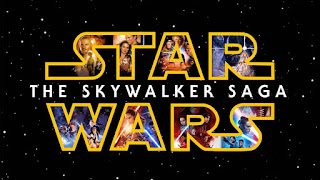


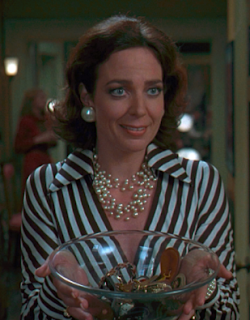
Most of the deals you’ll see for on line casino free spins would require you to make a deposit to a verified player account find a way to} trigger the bonus. There will be a minimal quantity of real cash you'll need|that you will want|that you'll want} to switch into your player wallet, using one of many allowed fee strategies. Video slots are often made hugely thrilling by the many bonus features they provide. There are games that offer free spins, wild symbols, picking games, 코인카지노 payout multipliers, increasing symbols, tumbling reels, and rather more.
ReplyDelete